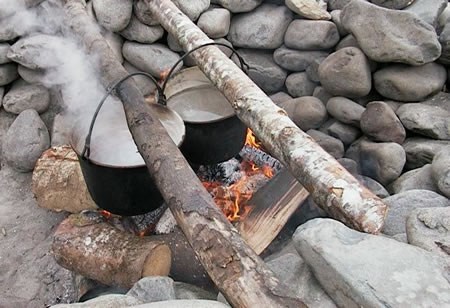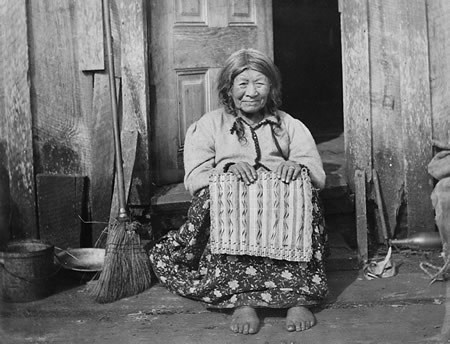
NPS Photo “Excellent, fine, strong & white” By the time the expedition arrived at the Pacific Coast its supply of salt for preserving and flavoring food was nearly exhausted. To remedy this situation, on December 28 Clark directed three of the men – Joseph Field, William Bratton, and George Gibson – to “proceed to the Ocean{and}at some convenient place form a camp and commence making Salt with 5 of the largest Kittles . . . .” Alexander Willard and Peter Weiser went along to help carry supplies. The men set up camp about 15 miles southwest of Fort Clatsop ‘near the house of some Clatsop & Kilamox {Nehalem} families” in what is now a residential area of Seaside, Ore. Usually at least three men were here, though the number varied and personnel were rotated. Salt was obtained by boiling sea water ‘day and night’ in kettles placed on an oven built of stones and fueled by trees and wood debris along the shore. The men were soon producing about three quarts a day of what Lewis described as ‘excellent, fine, strong & white” salt. By February 21, 1806, when the camp was abandoned, the salt makers had accumulated enough for the trip home. About three of the approximately four bushels produced at the camp were packed in kegs and used on the homeward journey. 
Photo Courtesy of the Seaside Museum, Seaside, Oregon In June 1900, representatives of the Oregon Historical Society traveled to Seaside, Oregon to try to identify the original site of the Lewis and Clark salt cairn. Accompanying them was an 86 year old Clatsop Indian woman named Jennie Michele. Her Clatsop name was Tsinistum. She told the men her mother had visited the site in 1805 and had met the expedition members. Her mother showed her the site where they made salt, and she visited the area many times. Her testimony was corroborated by Judge Thomas A McBride in December of 1900. He was shown the site by Celiast, the daughter of Clatsop Chief Coboway. The Oregon Historical Society documented the site and installed a fence around the area to protect it. The site was on private property, and the owner deeded the site on June 16, 1910 to the society as a gift to be held “in trust for the people of the State of Oregon for historical purposes only.” In 1955 the Seaside, Oregon Lions Club built a replica of the Salt Cairn on the site. The site was transferred to the National Park Service and added to Fort Clatsop National Memorial in November 1978. More Information: Plan your visit to the Salt Works. |
Last updated: January 2, 2023
